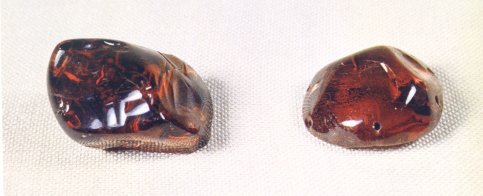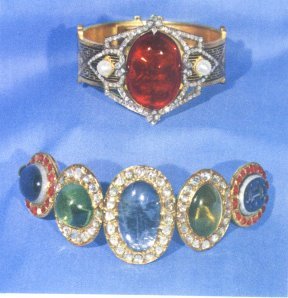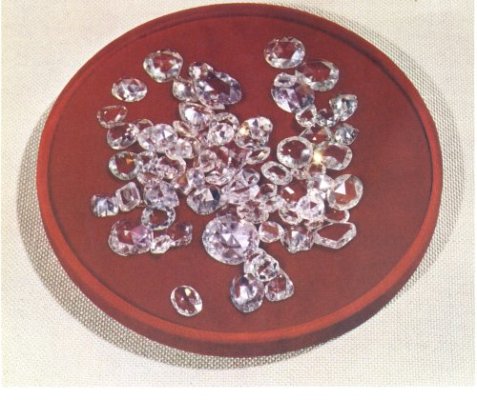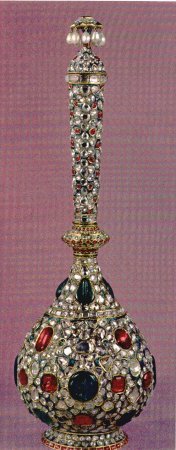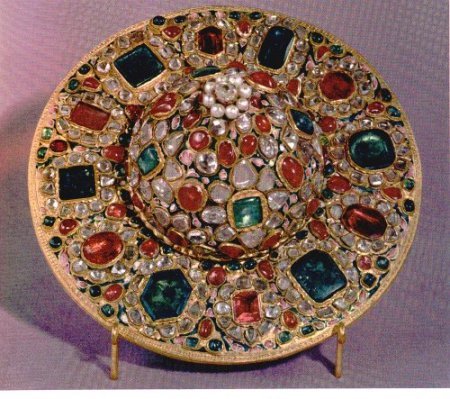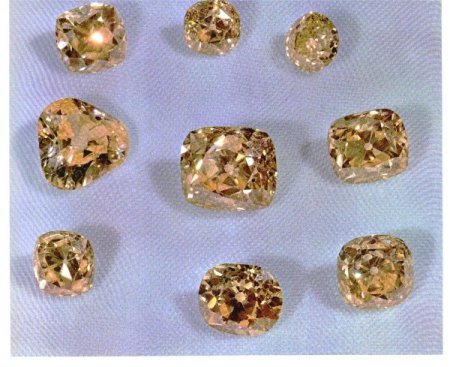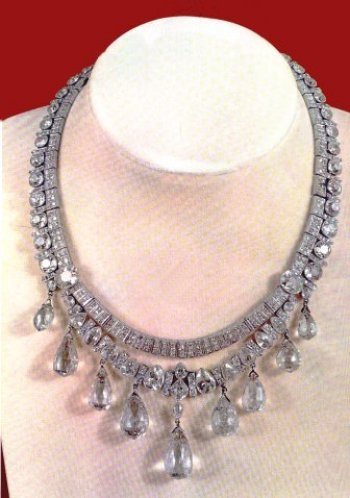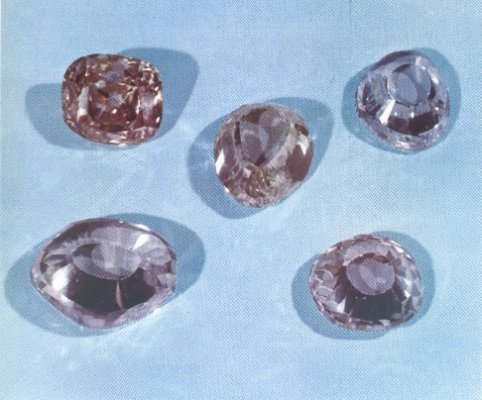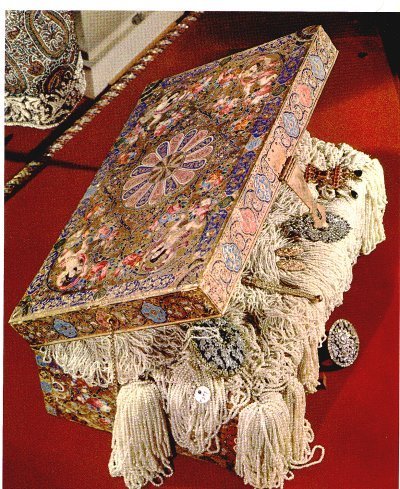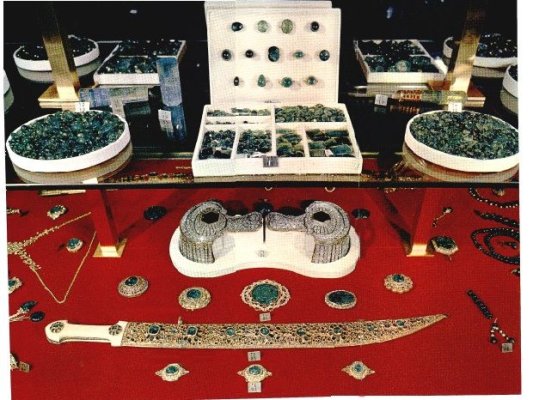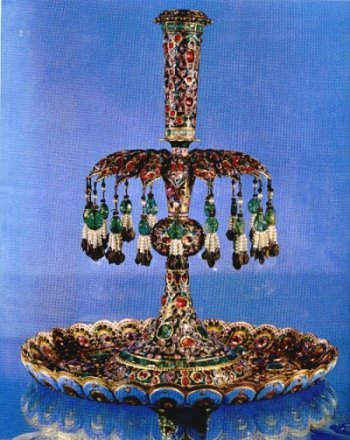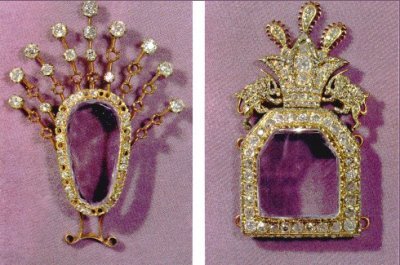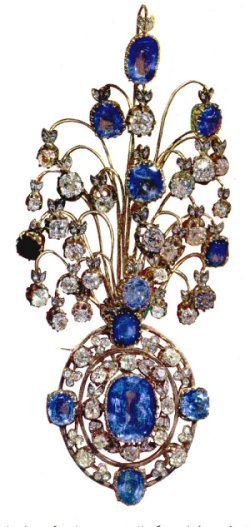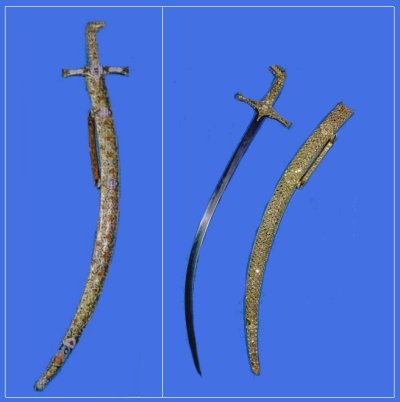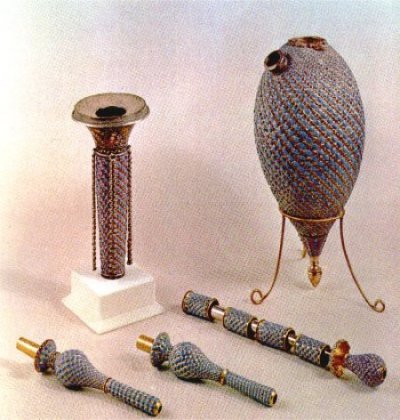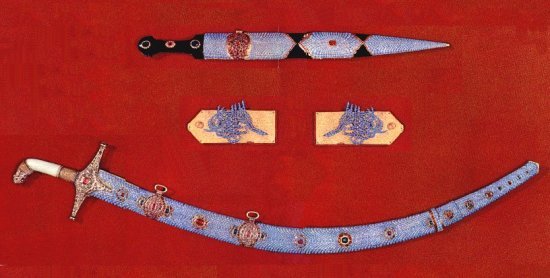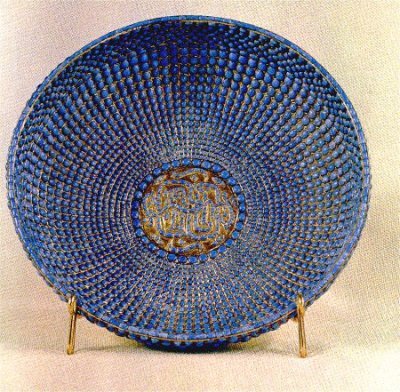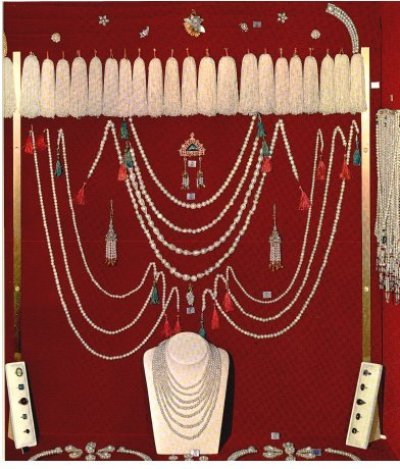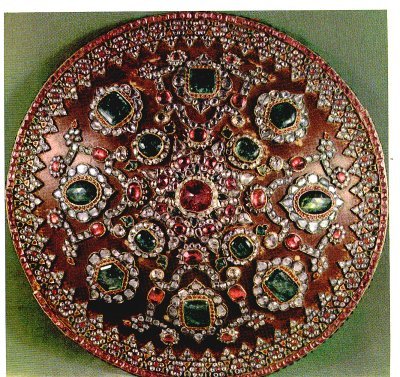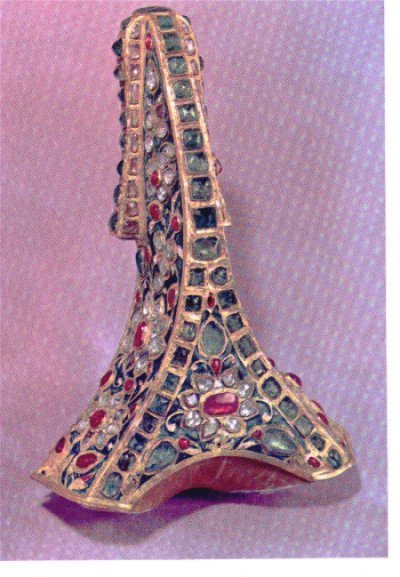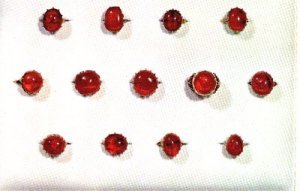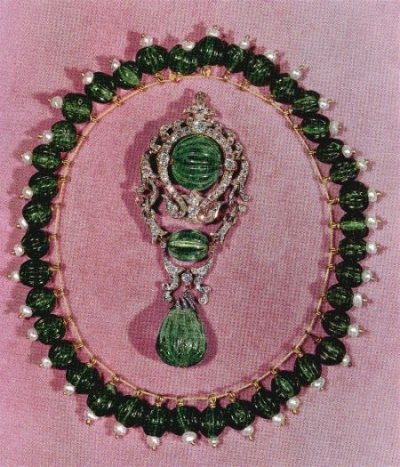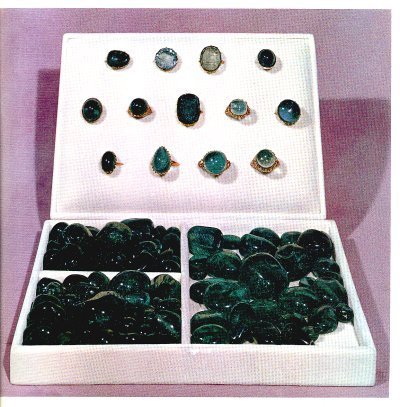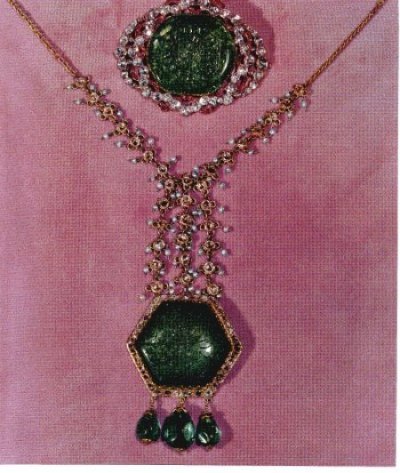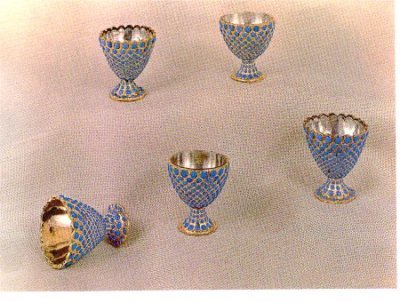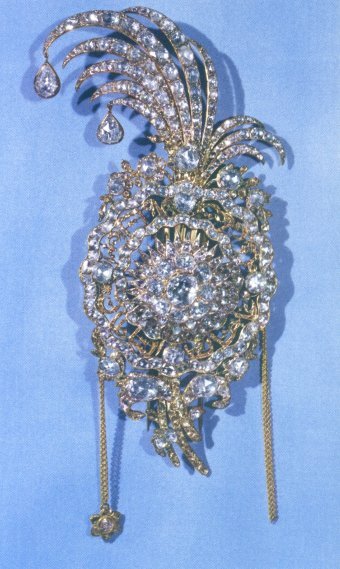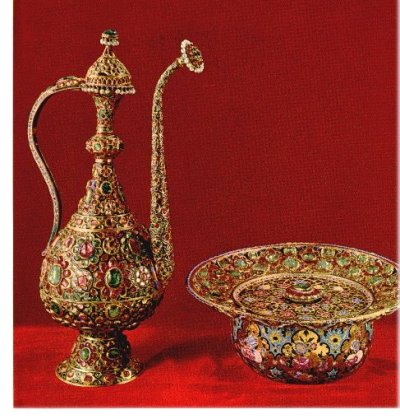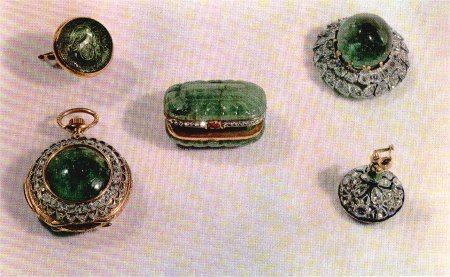Blueice
Nobility
- Joined
- Oct 24, 2003
- Messages
- 384
- City
- Belgrade
- Country
- Serbia and Montenegro
Loose Spinels
The gemstone on the left is the world's largest spinel. It is 5.5 cm (2.17 in.) wide and weighs 500 cts.
The gemstone on the right weighs 270 cts. and is the world's fourth larget spinel.
The world's second largest spinel weighing 414 cts. is in the Kremlin museum, and the world's third largest spinel weighing 361 cts. is part of the British crown jewels.
The stone on the right, though smaller, has greater historical significance. It bears a three hundred and fifty year old inscription attributing it to Jehangir, the Mughol Emperor of India. According to legend, in response to criticism for having his name inscribed on the stone, Jehangir stated "This stone shall make my name more famous than the entire dynasty of Tamerlane." His prediction was at least partly correct, as Tamerlane's dynasty died out after 150 years, while Jehangir's name lives on inscribed on a number of gemstones in the Iranian treasury and foreign museums. This particular stone used on an armband for Nader Shah in 1739 AD. The larger stone has a hole in it. According to a diary entry of the court physician to Nasseridin Shah, the King told the physician that the stone once adorned the Golden Calf, and that a diamond later covered the hole. There is no way to confirm Nasseridin's Shah's fanciful description, and the diamond has since fallen off.
The gemstone on the left is the world's largest spinel. It is 5.5 cm (2.17 in.) wide and weighs 500 cts.
The gemstone on the right weighs 270 cts. and is the world's fourth larget spinel.
The world's second largest spinel weighing 414 cts. is in the Kremlin museum, and the world's third largest spinel weighing 361 cts. is part of the British crown jewels.
The stone on the right, though smaller, has greater historical significance. It bears a three hundred and fifty year old inscription attributing it to Jehangir, the Mughol Emperor of India. According to legend, in response to criticism for having his name inscribed on the stone, Jehangir stated "This stone shall make my name more famous than the entire dynasty of Tamerlane." His prediction was at least partly correct, as Tamerlane's dynasty died out after 150 years, while Jehangir's name lives on inscribed on a number of gemstones in the Iranian treasury and foreign museums. This particular stone used on an armband for Nader Shah in 1739 AD. The larger stone has a hole in it. According to a diary entry of the court physician to Nasseridin Shah, the King told the physician that the stone once adorned the Golden Calf, and that a diamond later covered the hole. There is no way to confirm Nasseridin's Shah's fanciful description, and the diamond has since fallen off.


